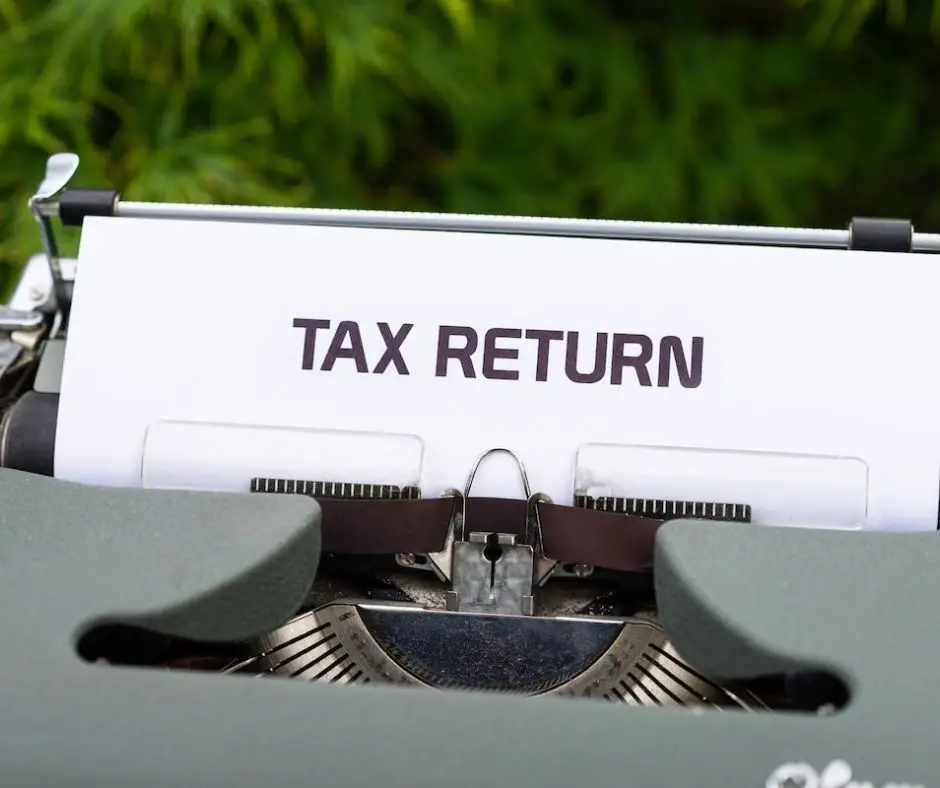Are you looking to invest in the property market? Buy-to-let could be the investment opportunity that you’ve been searching for. It’s a popular way to make money, but it can also be quite confusing if you don’t know how it works. In this article, we’ll help you understand exactly what buy-to-let is and how it works.
Buy-to-let means purchasing a property that you are going to let out over a short or long-term. It usually involves investing your money and taking out an associated mortgage in order to make a profit on rental income and potential capital growth over time. You are responsible for the overall condition of the property, while tenants pay rent and look after it day to day.
A lot of us want to experience financial freedom, and investing in property can help us towards this goal. Buy-to-let offers an attractive return on your money, with the potential for long-term success and security. But before you get started, it’s important to understand the basics of how buy-to-let works. With a little knowledge and planning, successful property investing could be within your reach.
If you’re ready to take the first step towards financial freedom through buy-to-let investments, read on! We’ll provide all the information that a UK property investor needs to know about making money through buy-to-let. Get ready for a journey of discovery – let’s get started!

Overview of Buy-To-Let
Buy-to-let is an investment opportunity that many property investors in the UK have taken advantage of. It involves buying a property that can be rented out to tenants, usually with the aim of generating rental income. The purchase process involves researching and identifying a suitable property, obtaining finance, and then completing the necessary legal requirements to acquire the property.
It’s important to make sure you are aware of all current market trends before investing in buy-to-let. This includes looking at rental yields, anticipated capital growth over time, and any upcoming changes in legislation or taxation rules which could affect your investment. This information can be obtained from various sources including estate agents and local authorities.
Once you have done your research, you’ll need to decide whether buying-to-let is the right type of investment for you. With this knowledge in hand, you can move forward with confidence knowing that your decision is based on sound research and accurate market analysis. With this considered mindset, let’s look at some of the benefits of buy-to-let investments.
Benefits Of Buy-To-Let Investment
Having looked at the overview of buy-to-let, let’s investigate the benefits of this investment option. Investing in buy-to-let property can provide a number of advantages, from long-term returns to tax breaks and cash flow. Here are some of the major benefits that come with investing in buy-to-let:
Long-term Capital Appreciation
- The value of your property is likely to increase over time due to capital appreciation.
- This makes it an attractive proposition for investors who are looking for long-term returns.
Cash Flow – Rental income can provide a steady stream of cash flow that can be used to pay off mortgages or other debts.
It also provides an additional income that can be used to fund other investments or lifestyle choices.
Tax Benefits & Savings – Buy-to-let investors may be eligible for certain tax breaks and savings, such as mortgage interest relief, which can reduce their overall tax bill.
Some investors may also be eligible for capital gains tax relief when they sell their property.
In addition to these advantages, buy-to-let investment can provide peace of mind knowing that you are invested in an asset that is likely to hold its value over time. With this in mind, it’s important to understand what is involved when deciding whether buy-to-let is right for your circumstances – including the necessary property requirements – before making any decisions.
Property Requirements
Property requirements for buy-to-let investments are absolutely critical, and no investor should ever ignore them! Buying the wrong property can be a recipe for disaster – or at best, a huge waste of time and money. To make sure you don’t make any costly mistakes, it’s important that you know what to look for in a rental property.
| Property Criteria | Buy-to-Let Property | Rental Property | Investment Property |
| Location | Central | High footfall | High demand area |
| Accessibility | Good transportation links | Local amenities nearby | Easy parking |
| Size | Medium/Large size | Not too small | Multiple bedrooms |
| Price | Affordable | Low maintenance costs | Low running costs |
When searching for the right kind of property, there are certain criteria which must always be taken into consideration. Location is perhaps the most important factor to consider when buying an investment property; ideally you want something in a central location with good transportation links and local amenities nearby. It should also offer easy parking and preferably not be too small (medium/large size).
Price is also an important factor; look for properties that are affordable with low maintenance costs and low running costs. Ultimately, you want to invest in a rental property that will provide income over the long term!
Now that you understand the key elements of finding the perfect buy-to-let property, it’s time to think about the financial considerations required to make your investment successful.
Financial Considerations
It’s important to understand the financial considerations when investing in a buy-to-let property. A thorough financial plan should be created to ensure maximum returns and long-term sustainability. Here are 4 key points of consideration for any investor:
- Mortgage Rates: Securing the best rate on your mortgage is essential for maximising your investment returns. Shop around for different lenders, consider any special offers and research market trends to ensure you get the most competitive rate possible.
- Financial Planning: Get advice from an expert finance advisor to help you create a reliable budget and financial strategy that will support your buy-to-let investments over time. This should include factoring in capital gains, rental yields, tax implications and other fees associated with running a property business.
- Investment Returns: Calculate potential investment returns before committing to a buy-to-let purchase; this means researching comparable properties in the area and what they are achieving in terms of monthly rent income versus costs associated with running them (including mortgage repayments).
- Capital Gains: Capital gains tax is something that needs to be factored into any buy-to-let purchase plan, as it can significantly reduce potential profits made from the sale of a property investment at a later date. It’s important to seek advice from an accountant or financial advisor about how best to minimise capital gains tax liability when investing in property.
With these considerations in mind, it’s now time to move on to understanding mortgage lending criteria and assessing which lender will offer you the most competitive deal for your buy-to-let venture.
Mortgage Lending Criteria
When it comes to buy-to-let mortgages, there are certain lending criteria that must be met in order to secure a loan. Here we break down the key requirements that lenders look for when assessing potential borrowers.
| Criteria | Requirements |
| Credit Score | Good credit score is essential for successful application. |
| Income & Outgoings | Evidence of sufficient income and manageable outgoings. |
| Rental Income | Must have verified rental income from property (or similar). |
| Buy-to-Let Experience | Can be beneficial if borrower has previous experience. |
The table above outlines the main criteria that lenders consider when assessing an applicant’s eligibility for a buy-to-let mortgage. The lender will use these criteria to determine whether or not they think you can make the repayments on the mortgage, which is why it is so important to meet them. In addition, many lenders will also take into account other factors such as your current employment status and any existing debts you may have before making their decision.
It’s worth noting that all of this information needs to be verified before a loan can be approved, so it pays to ensure you have all necessary documents prepared and available in advance of submitting your application. That way, you can give yourself the best chance of success when applying for a buy-to-let mortgage. With all this in mind, let’s now take a look at how rental income tax implications might affect your investment decisions.
Rental Income Tax Implications

As a buy-to-let investor, you need to be aware of all the tax implications that come with becoming a landlord. The UK’s rental income tax system is complex and can vary depending on individual circumstances. Here’s a breakdown of what you need to know:
- Rental income is subject to Income Tax, which could range from basic rate up to 45% for higher earners.
- If you’re running your property business as a limited company then Corporation Tax will apply on any profits made from rental income.
- Capital Gain Tax may be payable if there is a profit on the sale or gift of property.
- Landlords are usually eligible for deductions on expenses related to their property such as mortgage interest, repairs, and lettings fees.
- Property owners may have to pay stamp duty land tax when buying or selling a buy-to-let property in England or Northern Ireland.
It’s important to understand these landlord taxes and how they affect your buy-to-let investments so that you can plan accordingly. It’s also wise to seek professional advice from an accountant or financial adviser if you’re uncertain about anything regarding your rental income tax responsibilities as a buy-to-let investor. Now let’s move onto insurance considerations.
Insurance Considerations
Now that we’ve discussed the taxation implications of buy-to-let investing, let’s look at some insurance considerations. As a UK property investor, you need to make sure that you protect your investment and yourself with the right buy-to-let insurance.
| Buy-to-Let Insurance | Description |
| Landlord Insurance | Covers damage to building structure and common areas of a block of flats |
| Contents Insurance | Insures your tenants’ possessions against theft, fire or water damage as well as accidental damage caused by them. |
| Legal Cover | Protects you from legal costs associated with tenant disputes such as evictions and rent arrears. It can also cover legal costs related to court cases for personal injury claims. |
| Rent Guarantee | Pays out if your tenant doesn’t pay rent due to job loss, accident or illness. |
Without these in place, you could be left out-of-pocket if something were to go wrong with your property or tenants! It’s important to remember that landlord insurance is not the same as home insurance, so make sure you get the right kind of policy for your buy-to-let investment.
It’s also worth noting that while most policies will provide financial protection against unexpected events, it’s still essential that landlords are aware of their responsibilities when it comes to looking after their tenants and their property. That said, having adequate landlord insurance in place can help mitigate some risk should anything go wrong. Onward then to considerations about ‘landlord responsibilities’!
Landlord Responsibilities
Buy-to-let involves a great deal of responsibility for the landlord. There are many landlord obligations to consider when investing in rental property.
Firstly, it’s essential to ensure you manage your rental property properly. This includes understanding the legal requirements and making sure that you are compliant with all relevant legislation. It also means having an effective system for tenant screening, setting up tenancy agreements, and managing rent payments. It’s important to be proactive and respond quickly to any issues that arise with tenants or the property itself.
Secondly, there is the ongoing maintenance of the rental property. Landlords must make sure they carry out regular checks and repairs as needed while ensuring that the safety regulations are met at all times. This could include inspecting appliances, checking plumbing and electrical systems, inspecting gas heating systems, and more.
Finally, landlords should stay informed about changes in legislation that may affect them or their tenants. Keeping updated on new developments can help ensure that you’re meeting your obligations as a landlord.
The next section will cover tenant rights and obligations when renting a buy-to-let property.
Tenant Rights And Obligations

Tenant rights and obligations are like two sides of the same coin in the buy-to-let world. As a landlord, you have certain rights; similarly, tenants also have their own rights that must be respected and adhered to. It is important to understand both landlord and tenant rights to ensure a smooth rental experience for all parties involved.
First and foremost, it is important to understand tenant rights. Renters are entitled to live in safe, clean, and secure premises that comply with all local housing standards. Landlords must not discriminate against any potential tenants based on race, religion, gender identity or expression, age, sexual orientation, disability or other protected characteristics under UK law. Tenants should also expect privacy from the landlord during their tenancy period as long as they are not in breach of their tenancy agreement.
Renters also have certain responsibilities when renting a property through a buy-to-let arrangement. Tenants should keep the property clean and tidy throughout their tenancy period and pay rent on time each month. They should also report any maintenance issues promptly so they can be addressed quickly before they become more serious problems. Finally, renters must respect their neighbours by avoiding excessive noise after specified hours outlined in the tenancy agreement.
By understanding both tenant rights and obligations landlords can create an environment where everyone feels respected and valued by one another throughout the duration of the tenancy agreement. Furthermore, this will help landlords minimise potential disputes between themselves and their tenants which can otherwise lead to costly legal battles down the line if not resolved swiftly and peacefully. With these factors in mind, it is now time to move on to finding suitable tenants for your buy-to-let property.
Finding Tenants
Once you’ve purchased your buy-to-let property, the next step is to find tenants. Advertising your property is key for this – it’s the best way to get the word out and attract potential renters. You can do this through a variety of channels, from traditional newspaper adverts to digital listings on popular property sites.
Once you’ve received applications from potential tenants, it’s important to carry out tenant screening. This involves checking references and financial information provided by applicants, such as income and credit reports. By doing this, you can ensure that your tenant has a good track record when it comes to paying their rent and taking care of properties they’ve previously rented.
When you have found an appropriate tenant, you will need to draw up a leasing agreement detailing the terms of their tenancy. This document should include information such as rental amount, payment frequency and any rules or regulations in place regarding pets or decorating. Upholding these agreements is essential for ensuring that both parties are happy with the arrangement. Ultimately, with careful preparation and effective advertising strategies finding suitable tenants for your buy-to-let investment doesn’t have to be difficult.
Frequently Asked Questions
How Much Money Do I Need To Start A Buy-To-Let Investment?
For those starting out in the world of buy-to-let investment, it’s essential to know the answer to this important question: how much money do I need? This is a complex issue and requires careful consideration of all your options.
When it comes to buy-to-let funding, there are three main sources: your own finances, borrowing from a lender, and drawing on other forms of rental capital.
Your own finances: You’ll need enough funds saved up or liquid assets that can be used for the initial purchase and setup costs of a buy-to-let property. This could range from several thousand pounds to tens of thousands depending on the area you’re looking at investing in.
Borrowing from a lender: If you don’t have enough money saved up, then you may need to borrow from a lender such as a bank or building society. These lenders will assess your credit score, income and other financial commitments before deciding whether or not they can lend you the money for a property purchase.
Drawing on other forms of rental capital: There are also other forms of rental capital available such as grants, joint ventures and crowdfunding opportunities which could help you get started with your investment. This can be beneficial if you lack the funds or don’t have access to traditional forms of lending.
As with any major financial decision, taking into account all these factors is essential when figuring out how much money you’ll need for your buy-to-let investment. It’s important to make sure that whatever option you choose is affordable and suitable for your individual situation so that you don’t end up in financial difficulty down the line. Taking advice from experienced professionals can help ensure that any decisions made are well informed and appropriate for your needs. With careful planning and research, anyone wanting to start their own buy-to-let venture can work out exactly how much money they need for success – unlocking their potential for liberation through property investment!
What Are The Potential Risks Associated With Buy-To-Let Investments?
When it comes to buy-to-let investments, there are a number of potential risks that need to be taken into consideration. Many of these risks are associated with rental property, landlord liabilities, tenant defaults and property market conditions. As a UK property investor, it is important to understand the different types of risks involved in order to make an informed decision about whether buy-to-let is right for you.
The first thing to consider when thinking about buy-to-let risks is rental property risk. This type of risk can include anything from maintenance issues to legal disputes with tenants or neighbours. It’s important to stay on top of all maintenance issues and ensure your rental agreements are watertight in order to mitigate this risk as much as possible.
Another key area of risk is landlord liabilities. Landlords can be held liable for any damage caused by their renters, such as fire or floods, so it’s important to have insurance in place in case something like this happens. Furthermore, landlords may also find themselves liable if a tenant gets injured due to their negligence or poor maintenance of the property.
Finally, there are tenant default and property market risks that must be taken into account too. These include:
- Tenant default risks:
- Late rent payments
- Nonpayment of rent
- Eviction process costs
- Property market risks:
- Changes in interest rates
- Economic downturns
- Unexpected changes in taxes and regulations
By understanding all these different types of buy-to-let investment risks, you can make an informed decision about whether this type of investing is right for you and how best to protect yourself from potential losses should something go wrong.
What Should I Do If A Tenant Doesn’t Pay Rent?
When it comes to buy-to-let investments, an important question to consider is what should I do if a tenant doesn’t pay rent? In the UK, landlords have certain rights and obligations when it comes to evicting tenants. Here’s what you need to know:
- Tenant eviction laws differ from country to country.
- Landlords are responsible for ensuring that tenants are aware of their rights and responsibilities.
- In cases of non-payment of rent, a landlord must follow the correct legal steps before evicting a tenant.
When dealing with rental arrears, the first step is to contact your tenant directly and politely remind them of their payment obligations. If the tenant still does not make payment after several reminders, then it may be necessary for you as the landlord to take further action. Depending on the situation, this could involve issuing a notice or seeking court action. It’s important to remember that the law requires landlords to follow specific procedures when evicting tenants in order to ensure they are treated fairly and with respect throughout the process.
As a UK property investor, it’s essential that you understand your rights and responsibilities when dealing with tenants who fail to pay rent. When taking any kind of action against a tenant, make sure that you comply with all relevant legislation as failure to do so can lead to costly consequences. Above all else, always treat your tenants with dignity and respect – even if they don’t always show it in return!
How Do I Find Tenants For My Buy-To-Let Property?
Finding tenants for a buy-to-let property can be a daunting task, especially in today’s competitive rental market. But with the right strategies and approach, landlords can find quality tenants quickly and efficiently.
First things first: it’s important to create an attractive rental listing that will help you stand out from the crowd. You’ll want to include details such as location, amenities, rent cost, photos or videos of the property, and any other information that would be helpful for interested tenants. Also, consider which platforms you want to list your property on – this could include popular sites like Rightmove or Zoopla, as well as online classifieds like Craigslist or Gumtree.
Once you’ve got your listing set up, you’ll need to start searching for potential tenants. This could involve advertising on social media platforms like Facebook or Twitter; attending local events; networking with other landlords in the area; or even just word of mouth! Once you’ve identified some promising leads, it’s time to start tenant screening. This process involves background checks to verify employment status and income, as well as credit checks to determine their financial history and ability to pay rent.
By doing all of these steps correctly, landlords should be able to find quality tenants who will help them make money on their buy-to-let investment in no time at all! With a bit of work upfront, landlords can build a strong portfolio that will generate passive income while giving them more freedom and flexibility in their lives.
What Kind Of Insurance Do I Need For A Buy-To-Let Investment?
When considering a buy-to-let investment, it is essential to understand the kind of insurance needed to protect yourself and your tenants. Whether you’re an experienced landlord or a first-time investor, having the right property insurance in place can give you peace of mind and ensure that your investment is protected.
When looking at buy-to-let insurance, there are several types of cover available. Tenant insurance covers any damage caused by your tenants, while landlord insurance typically covers any loss of rent due to tenant default. Additionally, many policies offer protection against legal costs if a dispute arises between you and a tenant over unpaid rent or damages. Investing in property insurance can also provide cover for buildings and contents in case of fire or flooding.
It’s important to remember that having the right property insurance for your buy-to-let investment is not just about protecting yourself; it also provides assurance to potential tenants who may be interested in renting from you. By taking out comprehensive coverage, you can demonstrate that you take your responsibilities as a landlord seriously and provide reassurance that their belongings will be protected should anything happen to your property.
By understanding the different kinds of buy-to-let insurance available and ensuring that the appropriate policies are in place, landlords can rest assured their investments are properly protected and their tenants feel safe when renting from them.
Conclusion
To summarise, buy-to-let investments are a great way to make money and build wealth. However, there are risks associated with this kind of investment that requires careful consideration. You will need to have a certain amount of capital available to purchase a property and secure insurance. Furthermore, you must be aware of the legal obligations when it comes to eviction and rental agreements.
It is also important to remember that finding suitable tenants can be time consuming and stressful. Therefore, it is vital to have an effective marketing strategy in place. I would recommend doing your own research into the local market in order to ensure you find the right tenant for your property.
In conclusion, investing in buy-to-let properties can be very rewarding if done correctly. With careful thought about the potential risks and rewards, as well as proactive management of the property, my advice would be to go for it!
- Maximize Tax Savings With Deductible Closing Costs on Rental Properties - May 5, 2024
- 9 Best Sofas to Elevate Your Living Room Style in 2024 - May 4, 2024
- Speed Sell: Home Quick Tips - May 4, 2024



